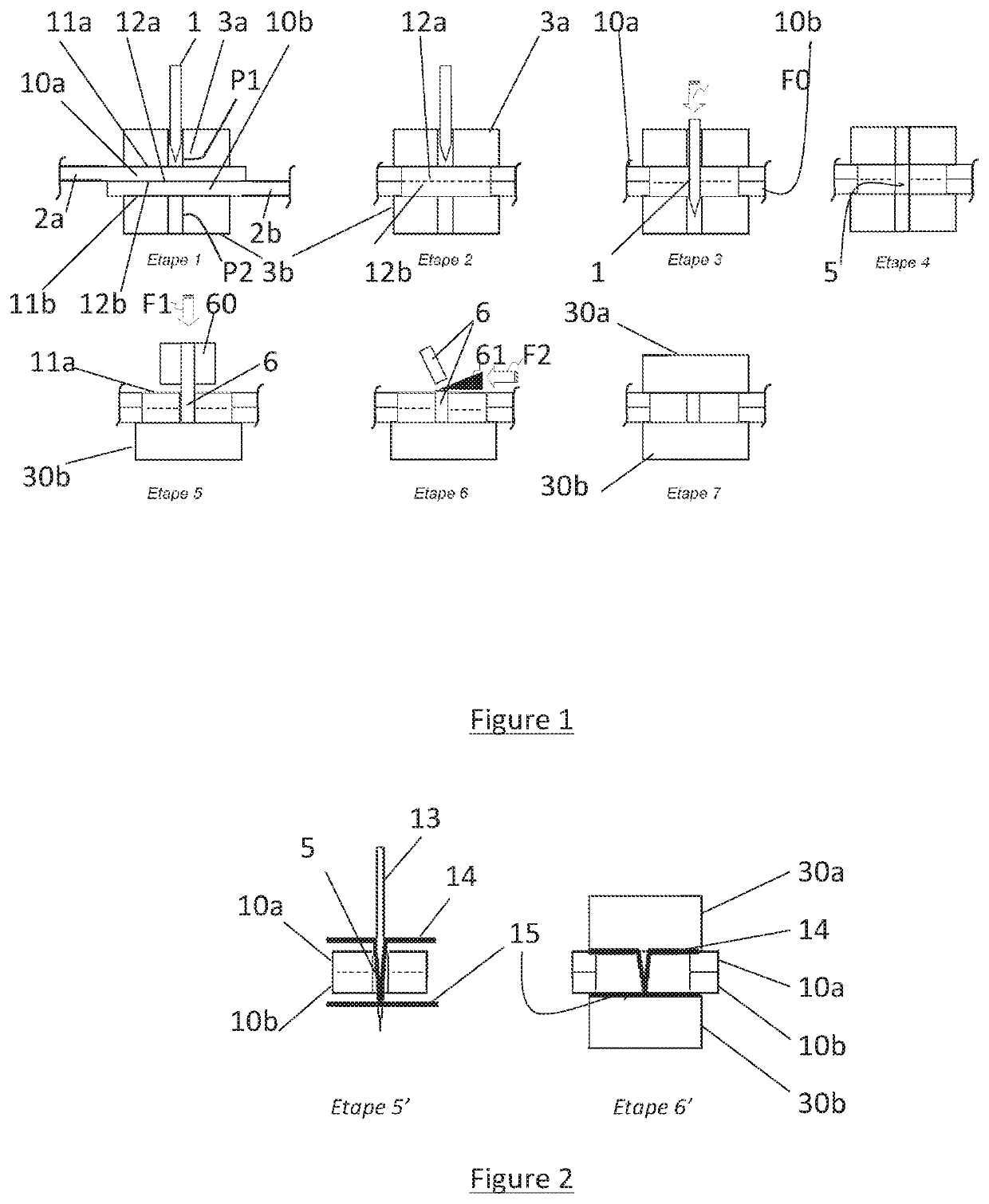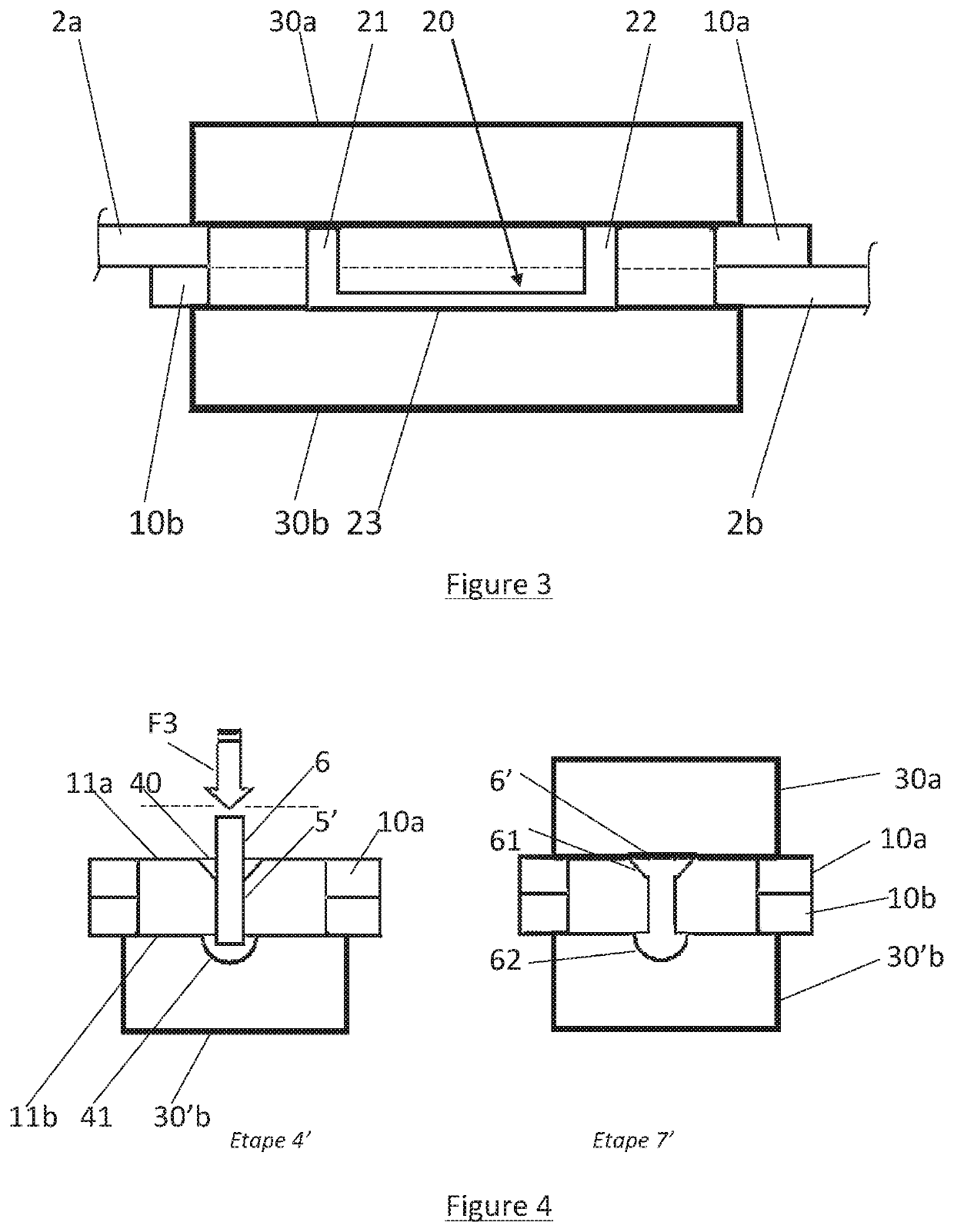Assembly of parts made from thermoplastic material and method for assembling such parts by means of thermoplastic riveting
- Summary
- Abstract
- Description
- Claims
- Application Information
AI Technical Summary
Benefits of technology
Problems solved by technology
Method used
Image
Examples
Embodiment Construction
[0045]FIG. 1 gives an example in seven main steps of the method according to the invention for assembling, by thermoplastic riveting, two parts 2a, 2b of the architecture of an airplane door made of thermoplastic material. In this example, the parts 2a, 2b are assembled via their end regions delimited by their edges 10a and 10b, but the method may be applied to the assembly of parts in regions situated at the center of these parts. The thermoplastic material here is PEEK (phenylene polyetheretherketone). This riveting involves the use of a holing spike 1, two holed heating panels 3a and 3b for the passage of the holing spike 1, and two non-holed heating panels 30a and 30b.
[0046]This method proceeds according to the following steps:
[0047]Step 1: superposing the edges 10a and 10b of the parts 2a, 2b made of thermoplastic material, these edges 10a, 10b therefore each having: a visible edge face 11a, 11b and a non-visible central edge face 12a, 12b pressed against the other central edg...
PUM
| Property | Measurement | Unit |
|---|---|---|
| Angle | aaaaa | aaaaa |
| Angle | aaaaa | aaaaa |
| Length | aaaaa | aaaaa |
Abstract
Description
Claims
Application Information
 Login to View More
Login to View More - R&D
- Intellectual Property
- Life Sciences
- Materials
- Tech Scout
- Unparalleled Data Quality
- Higher Quality Content
- 60% Fewer Hallucinations
Browse by: Latest US Patents, China's latest patents, Technical Efficacy Thesaurus, Application Domain, Technology Topic, Popular Technical Reports.
© 2025 PatSnap. All rights reserved.Legal|Privacy policy|Modern Slavery Act Transparency Statement|Sitemap|About US| Contact US: help@patsnap.com


